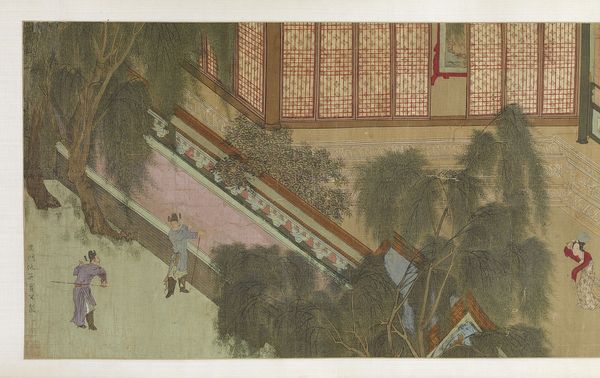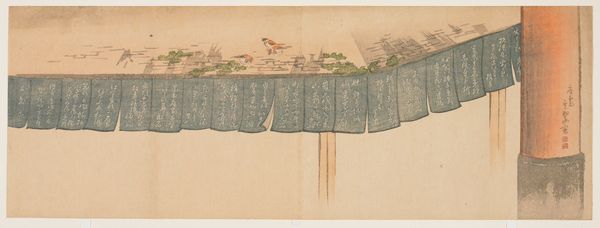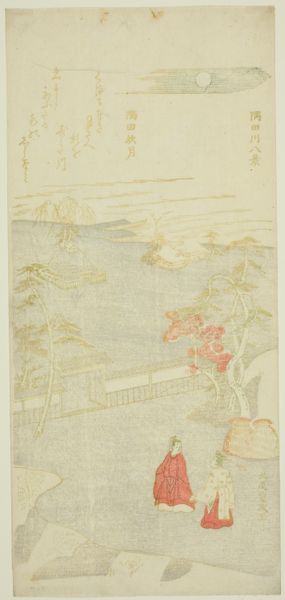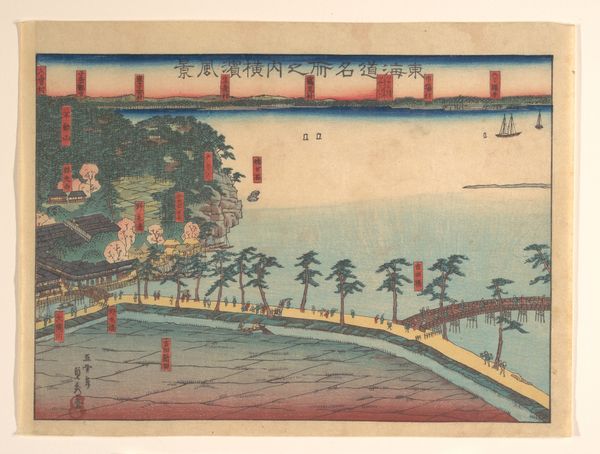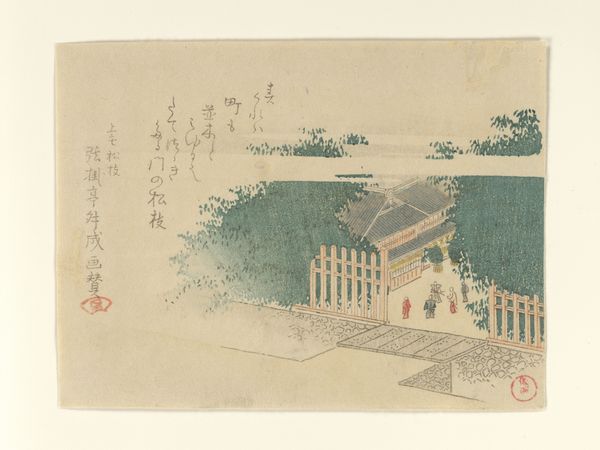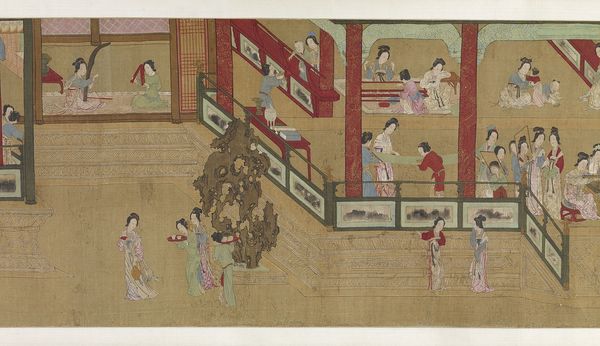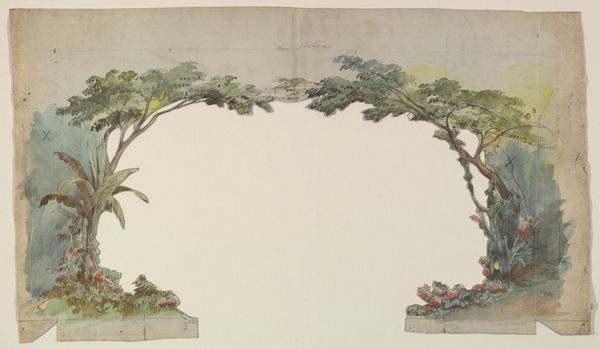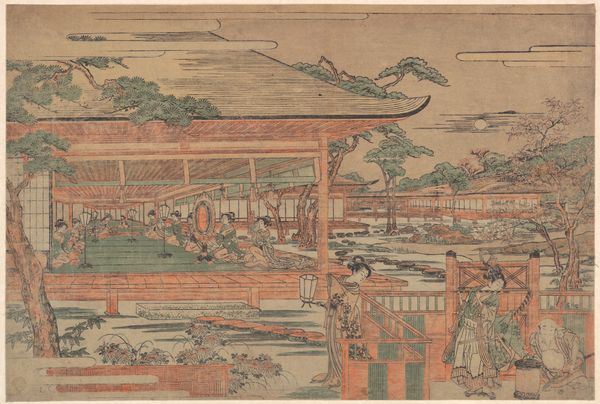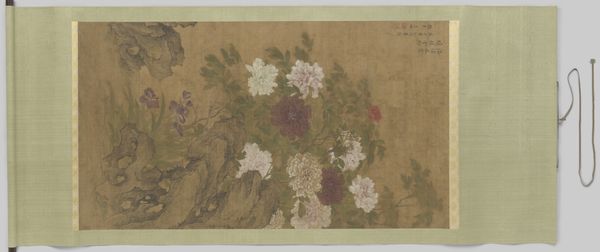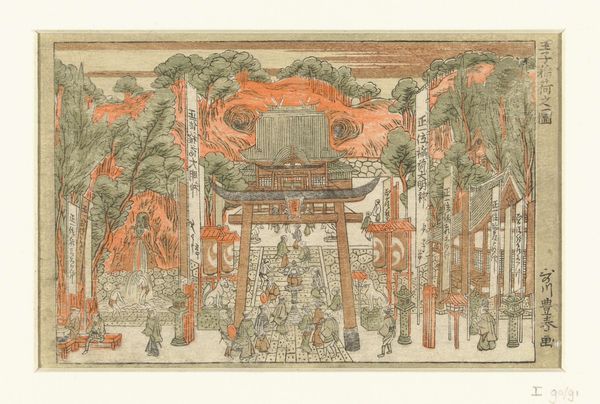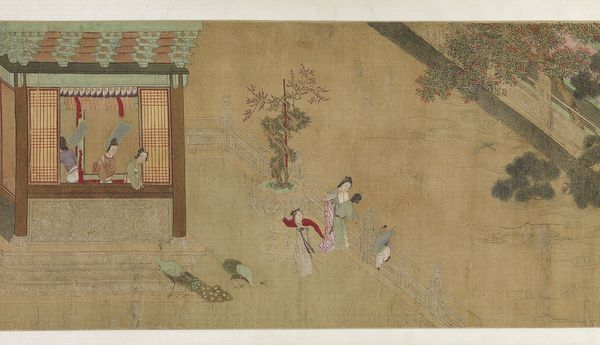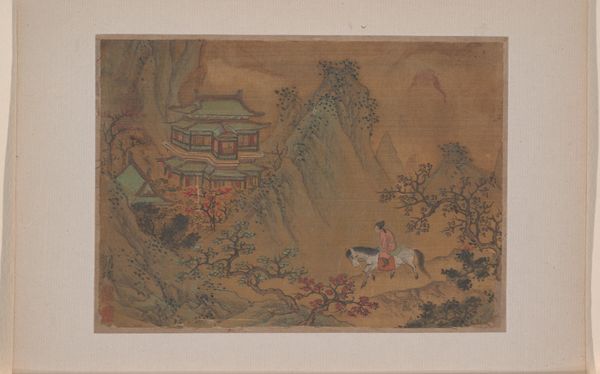
painting
#
painting
#
asian-art
#
landscape
#
line
Copyright: Public domain
Curator: Good morning. We're standing before Qiu Ying's "Spring Morning in the Han Palace (View A)", painted around 1530. It’s an evocative depiction of imperial life during that period. Editor: Immediately, what strikes me is the incredible linear perspective—or perhaps more accurately, the strategic bending of it. The eye is led along these diagonal planes, but there’s something subtly off-kilter. It prevents a total vanishing point perspective. Curator: That deliberate disruption contributes to a complex viewing experience, doesn't it? Consider the court at this time: rife with political intrigue, factionalism. The painting serves as both a record of imperial grandeur and a subtle commentary on its underlying instability. We have to think about this painting circulating amongst certain educated, elite circles at that time. Editor: The architecture itself almost overwhelms the scene, too. The repetition of the roofs and corridors become these geometric devices for dividing space. It's architecture not as enclosure, but as pattern, isn't it? It is beautiful in its precision. The application of color is sparing but effective, using pale hues and strong verticals, like the crimson pillars. Curator: Precisely. And note how even the flora serves the overall narrative. The positioning of specific plants had encoded significance; for example, evergreens such as the pine represent longevity and enduring power, relevant ideals considering the fragility of a dynasty! This palace, even in its apparent serenity, functions almost like a stage set. Editor: It certainly makes you contemplate the painting as both document and theatrical presentation. The organization of space—these walled sections, divided courtyards. You get this feeling the depicted inhabitants are forever being watched and watched over. Curator: It highlights a common narrative regarding the Imperial court - the cost and trappings of luxury alongside themes of surveillance. In effect, it became the theater of political action. It tells us so much about Chinese attitudes of the time. Editor: It really brings us back to thinking of line as structure. Everything is defined by those incredibly controlled lines; it really carries the emotion of the image, as well. So subtle, but the balance and care are impeccable. I think there is great sensitivity in its formalism. Curator: Agreed. It provides a subtle glimpse into a period characterized by both opulence and political maneuvering. Editor: Ultimately it's just breathtaking and really shows a lot about that moment in time through carefully manipulated geometry.
Comments
No comments
Be the first to comment and join the conversation on the ultimate creative platform.
